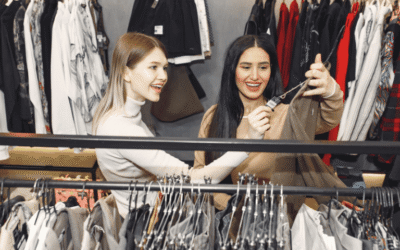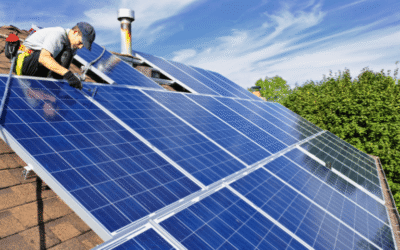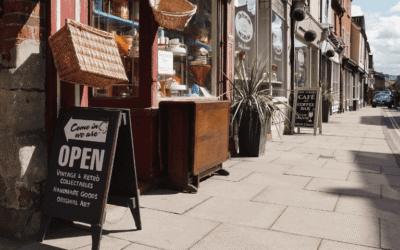While many of us know there are light bulb bans in effect or going into effect across the U.S. there is a lot of confusion on the laws and restrictions. For organizations with locations across multiple states, keeping up with these bans can be a full-time job.
Before we cover each state’s light bulb ban, let’s look at how it got started.
The Start of Light Bulb Bans
Former President George W. Bush signed the Energy Independence and Security Act (EISA) into law in 2007 to promote energy efficiency.
The EISA impacts several types of lighting products that include light bulbs and general service lamps (GSLs). The U.S. Department of Energy (DOE) is responsible for updating rules pertaining to lighting fixtures, and recently updated guidelines for GSLs in 2017.
The new guidelines limit GSLs to 45 lumens per watt. It means that by January 2020, certain lighting products were banned in all U.S. states. It includes most halogen and incandescent bulbs.
Currently, the GSL ban is not in effect. The DOE definition of GSLs has prompted lawsuits from several cities. Even though the lawsuits are winding their way through the court system, some states have gone ahead with the general service lamp ban. Other states are keeping GSLs but have a ban on high-CRI linear fluorescents.
To help keep the various light bulb bans straight, it helps to divide the states into three categories.
- States with GSLs restrictions
- States with fluorescent light bulb bans
- States with proposed or pending light bulb bans
The states with GSLs bans are,
- California
- Nevada
- Washington
The standards for GSLs vary in each state, so make sure you do your research before purchasing a product.
States with restrictions on fluorescent bulbs are,
- Colorado
- Hawaii
- Vermont
The ban on fluorescents targets lights with a CRI of 87 or higher. States are allowed to create their specific restrictions since the EISA does not cover these lighting products.
Additional states discussing, are passing, or have current legislation are,
- Washington D.C.
- Maine
- Connecticut
- New Jersey
- New York
- North Carolina
- Pennsylvania
- Oregon
- Rhode Island
- Massachusetts
To see exactly what is banned in which state we have an entire blog dedicated to just that. You can read it in full here: Which Light Bulbs are Banned in Which State? You can also read the full series call: Light Bulb Bans Blog Series.
The Next Step for Light Bulb Bans
The lawsuit against the Department of Energy’s definition of GSLs is in the Second Circuit Court of Appeals, and several states are waiting for the decision. The attorney general filing the suit states if efficiency standards on lightbulbs were regulated over $580 billion in energy costs would be saved. Over two billion metric tons of CO2 emissions would also be avoided by 2050.
In response to the lawsuit, the DOE is working on new regulations for general service lamps. These restrictions go into effect around the year 2025. It will create a set of regulations all states will be required to follow.
What is a GSL?
GSL or general service lamp has become a broad term. Previously, it only included halogen and incandescent lightbulbs, but now can also cover LED and fluorescents.
The official DOE definition of general service lights is,
“General Service Lamps (GSLs) include general service incandescent lamps (GSILs), compact fluorescent lamps (CFLs), general service light-emitting diode (LED) lamps, organic light-emitting diode (OLED) lamps, and any other lamps that are used to satisfy lighting applications traditionally served by GSILs. GSLs are used in general lighting applications and account for the majority of installed lighting in the residential sector.”
What are Lumens per Watt?
Lumens per watt (LPW) is the rate or unit of efficacy the lamp converts watts (power) to lumens (light).
The watt or power is the amount of energy the bulb consumes, and the lumen is the amount of light the bulb produces.
With traditional bulbs the wattage determined the bulb’s brightness, now it is the lumens. LED lighting products focus on using less wattage to produce more lumens. You get a brighter bulb while using less energy. The savings is what is pushing the movement to switch to energy-efficient lighting.
If you are interested in an LED upgrade and would like to calculate your savings, you are in luck! We have an eBook, The Essential Guide to Calculating Energy Savings and ROI on any Lighting Project, that walks you through the process of calculating your savings and it includes all of the needed calculations.
What Started CRI Restrictions?
Color rendering index (CRI) indicates the accuracy of the bulb’s display color.
The EISA excluded high-CRI linear fluorescent lamps allowing states to place restrictions on the lighting products. It primarily affects CRI bulbs at 87 or higher or T12s.
T8s are being phased out by manufacturers, along with T5s. These bulbs consume more energy than T12 linear fluorescent tubes and the phase-out is part of a push to start reducing energy usage in lighting products.
What is the EISA?
Former President George W. Bush signed the Energy Independence and Security Act (EISA) into law in 2007 with the idea of promoting energy efficiency.
The first part of the act effectively eliminated 60W incandescent lights between 2012-2014.
On January 1, 2020, the second set of regulations were set to take effect. A reversal from the Department of Energy (DOE) effectively halted the restrictions. The DOE’s reversal on the definition of GSL in 2019 has put a halt to the guidelines requiring all bulbs to deliver the same amount of light using 65% less energy than standard incandescent lights.
Want to Know More About Light Bulb Bans and Restrictions?
If you want to know about which light bulbs are banned in your state or city, you can read the next blog in this series, Which Light Bulbs are Banned in Which States, or give us a call. Action Services Group has dedicated lighting professionals waiting to answer all of your lighting questions. Speak to one today by calling 610-558-9773, emailing [email protected], or schedule a call that fits your needs by clicking the button below.








































0 Comments